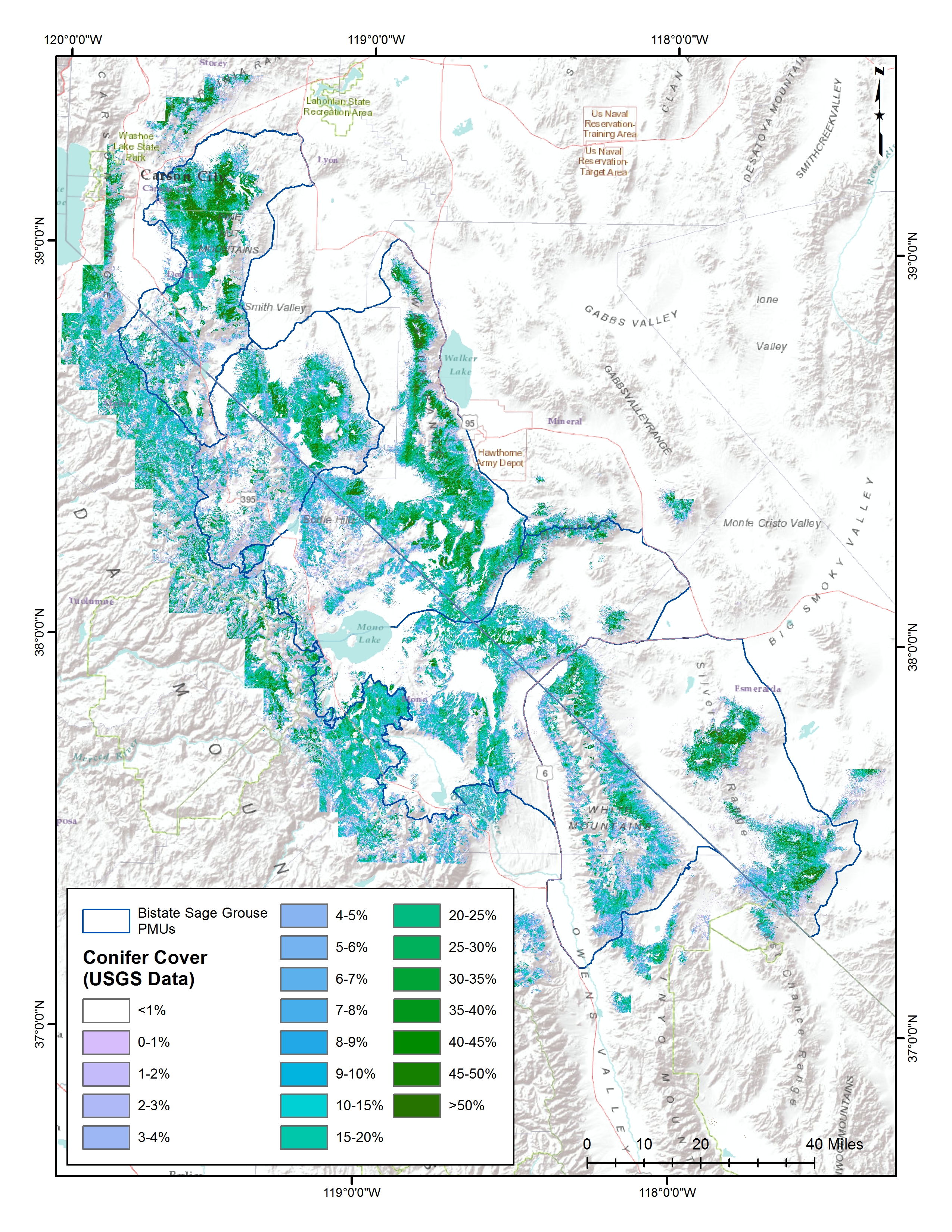Conservation Planning Tool
Bi-State sage-grouse are strongly affected by conifer expansion, annual grass invasion, and more frequent wildfires occurring in sagebrush ecosystems. Associated restoration treatments to a sagebrush‐dominated state are often costly and may yield relatively little ecological benefit to sage‐grouse if implemented without estimating how sage‐grouse may respond to treatments, or do not consider underlying processes influencing sagebrush ecosystem resilience to disturbance and resistance to invasive species.
Managers require quantitative yet tractable tools that identify areas for restoration yielding effective benefits for targeted wildlife species and the ecosystems they inhabit. As a result, the USGS developed a spatially explicit conservation planning tool (CPT) to inform prioritization of: (1) removal of conifers (i.e., pinyon‐juniper); and (2) wildfire restoration aimed at improving habitat conditions for the Bi‐State DPS.
The CPT measures ecological benefits to sage‐grouse for a given management action through a composite index comprised of resource selection functions and estimates of abundance and space use. For pinyon‐juniper removal, they simulated changes in land‐cover composition following the removal of sparse trees with intact understories, and ranked treatments on the basis of changes in ecological benefits per dollar‐unit of cost. For wildfire restoration, they formulated a conditional model to simulate scenarios for land cover changes (e.g., sagebrush to annual grass) given estimated fire severity and underlying ecosystem processes influencing resilience to disturbance and resistance to invasion by annual grasses. Utilizing the CPT model is an important step in identifying management projects that yield the highest quantifiable benefit to sage‐grouse and maximize conservation dollars spent.

